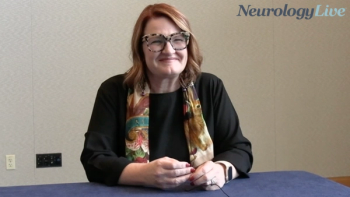
Recent Progress in Advancing Gene Therapy for Parkinson Disease: Russell Lonser, MD
The director for the Gene Therapy Institute at The Ohio State University talked about the latest developments in gene therapy for patients with Parkinson disease. [WATCH TIME: 4 minutes]
WATCH TIME: 4 minutes
"I think what gene therapy provides us is a new opportunity to really target the specific problem of the disease at its core."
AB-1005 (AskBio), an investigational adeno-associated viral vector serotype 2 (AAV2) gene therapy containing the human glial cell line-derived neurotrophic factor (GDNF) transgene, was recently assessed in a phase 1b trial (NCT04167540) for Parkinson disease (PD) treatment. The trial primarily looked at safety and potential clinical effect of AB-1005, with other secondary outcomes that assessed motor and non-motor function, as well as brain dopaminergic network integrity through DaTSCAN. New data from the
In the study, which follows patients for up to 5 years post administration, scheduled 6-month postoperative MRIs revealed findings of asymptomatic unilateral T1 hypointensity adjacent to 3 of the putaminal infusion trajectories. Although the study was small scale, with only 11 patients included, those with mild (n = 6) and moderate (n = 5) forms of PD experienced improvements in ON and OFF time with AB-1005.1 Presented at the
Russell Lonser, MD, director for the Gene Therapy Institute and chair of the department of neurological surgery at The Ohio State University, recently sat down with NeurologyLive® in an interview to discuss the key challenges in optimizing gene therapy for PD, particularly regarding target selection and gene choice. He also spoke about how findings from the recent phase 1b trial further contribute to the understanding of the potential of gene therapy's efficacy and safety in treating PD. In addition, Lonser talked about the potential implications of gene therapy advancements for the future treatment landscape of neurological disorders beyond PD.
REFERENCES
1. AskBio presents 18-month phase 1b trial results of AB-1005 gene therapy for patients with Parkinson disease. News release. AskBio. April 16, 2024. Accessed May 6, 2024. https://www.globenewswire.com/news-release/2024/04/16/2863581/0/en/AskBio-presents-18-month-Phase-Ib-trial-results-of-AB-1005-gene-therapy-for-patients-with-Parkinson-s-disease.html
Newsletter
Keep your finger on the pulse of neurology—subscribe to NeurologyLive for expert interviews, new data, and breakthrough treatment updates.


































